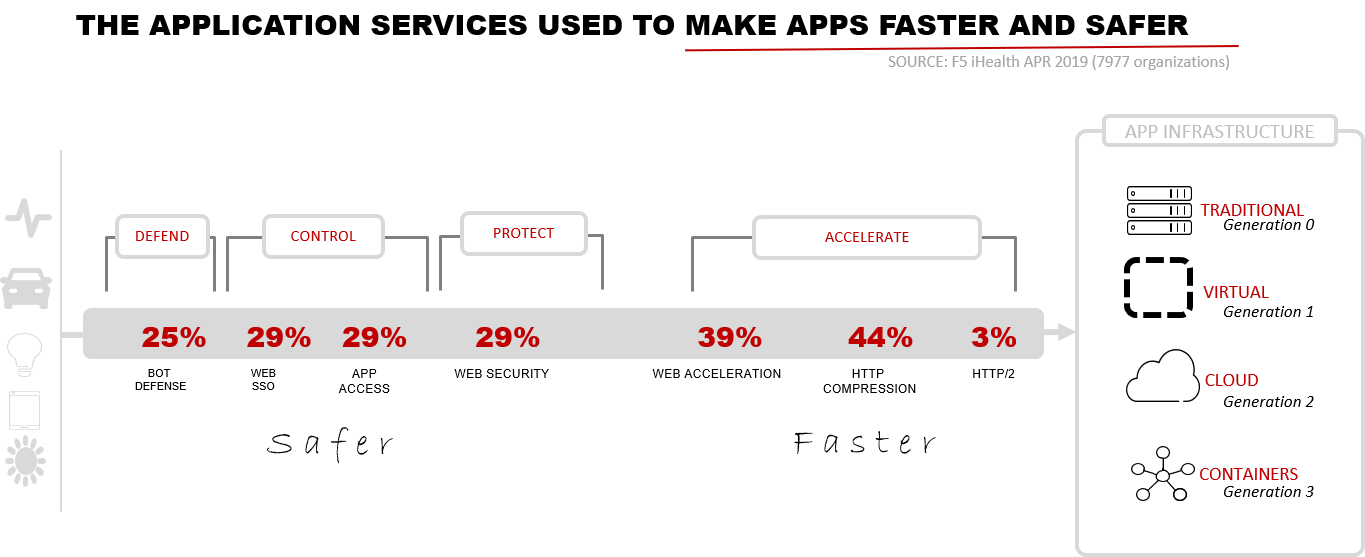applicationサービスの更新: すべてをもう少し
この四半期のアップデートでは、セキュリティ、パフォーマンス、可用性、および ID/アクセスの面で若干の向上が見られます。
applicationサービスの使用率のみが増加した四半期は珍しいです。 これはその地区の1つです。 増加率はほとんどのカテゴリーで 1% とわずかでしたが、カテゴリー全体で使用量の減少がゼロだったのは印象的です。
特に注目すべきは、2018 年 1 月以降 2% の使用率で安定している HTTP/2 です。 今四半期は初めて3%の増加となりました。 圧縮や多重化などの他の加速技術に比べるとまだ貧弱ではありますが、たとえわずかな改善でも見られるのは励みになります。 HTTP/2 は、従来の通信量の多い Webapplicationsのパフォーマンスを向上させるために最も効果的に活用されます。 モバイルや SPA などの最新の API ベースのアプリは、会話が短いため、プロトコルのパフォーマンスによる影響が少なくなります。 組織は依然としてメリットを享受できますが、セッションの存続期間中に接続を再利用する従来のステートフル Web アプリに HTTP/2 を適用しない限り、HTTP/2 によるパフォーマンスの大幅な向上は期待できません。

守る
ボットが再び防御を強化
ボット防御は前四半期から再び 1% 増加し、悪意のある非人間トラフィックに対する防御にボット防御を採用している組織が 24% から 25% に増加しました。
F5 Labsの調査によると、インターネット トラフィックの半分はボットから発生しているとのことです。 これらのうち約 3 分の 1 (30%) は悪意のあるものです。
制御と保護
セキュリティは堅固
applicationアクセスと Web シングル サインオン サービスの使用は四半期ごとに安定しており、 Webセキュリティは1% 増加しました。
F5 Labs の分析により、侵害の 86% でapplicationsと ID が最初の標的となっており、これらのapplicationサービスが重要であることが明らかになりました。
加速する
スピードが戻る
HTTP 圧縮サービスとキャッシュ サービスは、今四半期それぞれ 1% 増加し、それぞれ 43% から 44%、28% から 29% に増加しました。
興味深いことに、SSL オフロード (クライアント側) と TCP 多重化はどちらも今四半期に 1% の増加を記録しました。 どちらのアプリ サービスもパフォーマンスの向上に重点を置いています。 また、導入されているサーバー側 SSL の割合 (71%) がクライアント側 (83%) よりも低いことも注目に値します。 クライアント側 SSL (83%) はパフォーマンス向上策として、また消費者の要求に応えるために導入されることが多いですが、サーバー側 SSL は通常、規制上の要求や業界のベスト プラクティスを満たすために使用されます。
